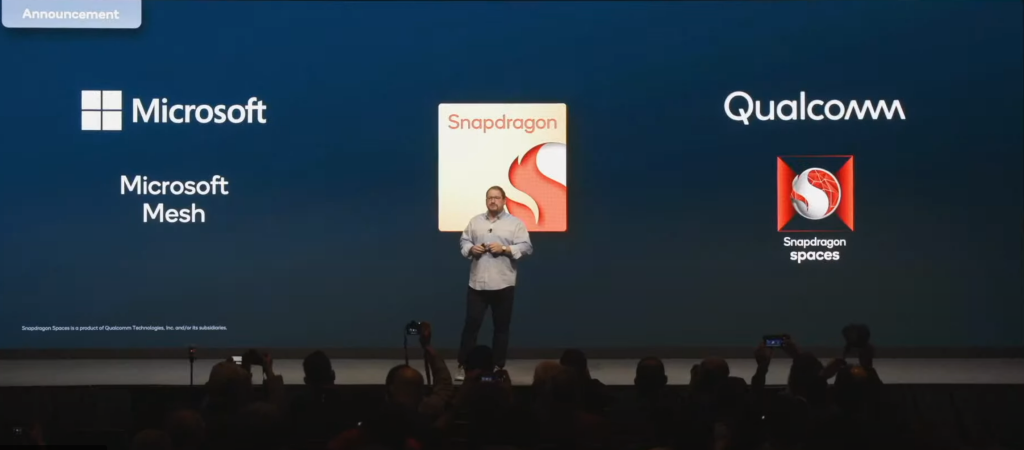
Custom Qualcomm chips will power Microsoft’s augmented reality future
Qualcomm said Tuesday at CES that the company is working with Microsoft to develop custom augmented-reality chips to help the two companies develop lightweight augmented-reality glasses.
Qualcomm, which has already developed what it calls its Snapdragon Spaces XR Developer Platform, plans to integrate it with Microsoft Mesh, Microsoft’s own platform to help it establish the “metaverse” that Facebook (now Meta) popularized. Qualcomm didn’t provide a timeline for when the development work would be completed.
“We’re announcing that we’re developing a custom augmented-reality Snapdragon chip, for next-generation, power-efficient, very lightweight AR glasses for the Microsoft ecosystem, and we’re integrating into that chip platform software from both companies,” Cristiano Amon, the chief executive of Qualcomm, said during a press conference at CES 2022.
“We’ve been talking for years about the possibility of having wearable augmented reality devices that will gain scale,” Amon continued. “I’m very excited about this partnership. It’s a step in making that a reality and gaining more and more scale with augmented reality.”
It’s unclear whether Microsoft will actually develop the device, or whether it’s being developed for a Microsoft partner. Microsoft, of course, has its own HoloLens platform, which it developed as an augmented-reality device when most of its competition was turning to virtual-reality, instead. Microsoft’s partners, including HP and Samsung, followed Microsoft’s lead into developing Mixed Reality devices that were essentially virtual reality headsets, and which flopped.
Augmented-reality glasses, of course, are what Google developed with Google Glass. Google later phased out Glass after users complained that they didn’t want to be recorded by users wearing Glass. Is Microsoft developing a next-generation HoloLens, or is designing a revamped device that’s more like Glass? We’ll have to wait and see.
This content was originally published here.


